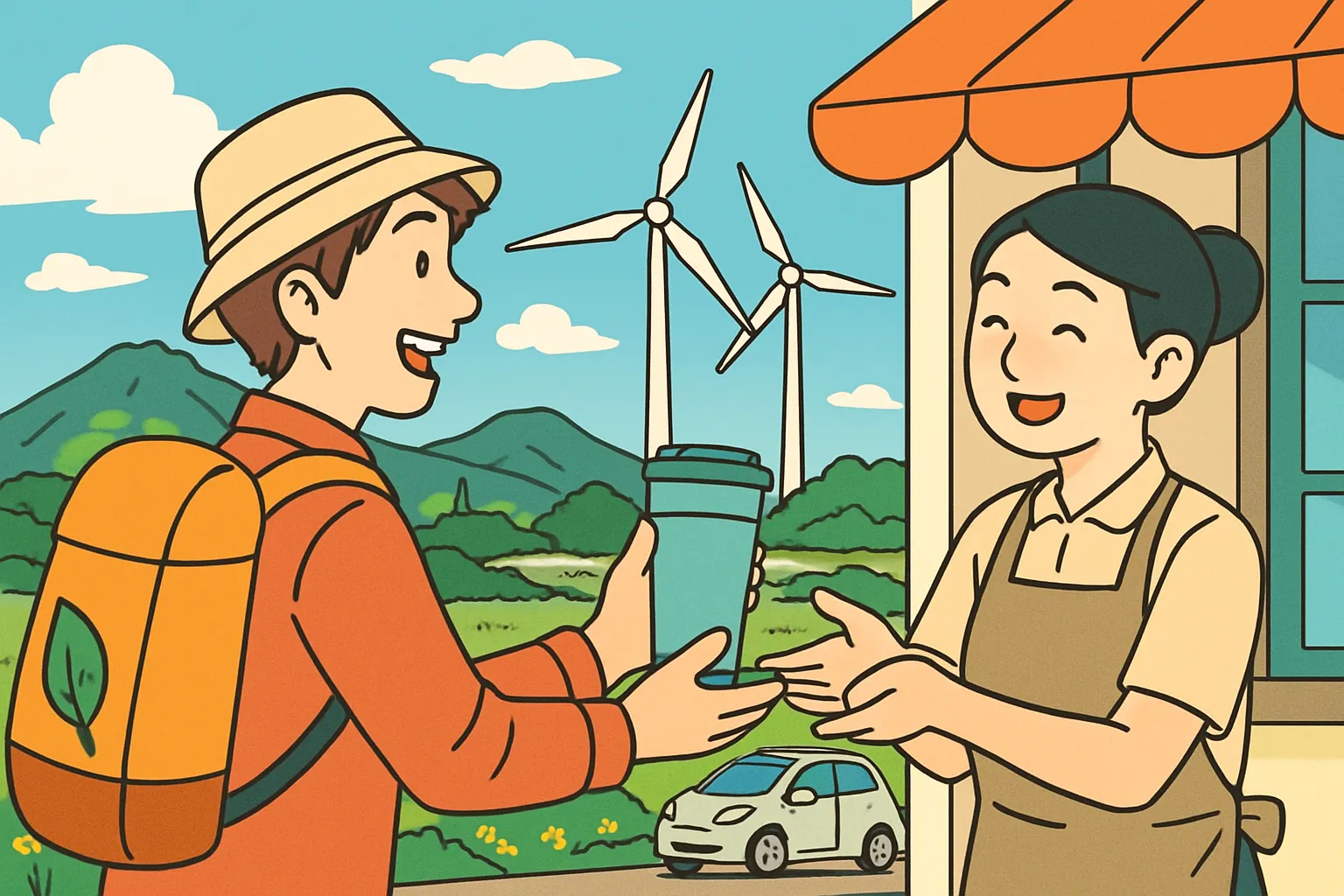K-Drama Colors: Your Nature Trip Vocabulary!
Hello! It’s your favorite Korean booster, Daily Korean, here to upgrade your language skills!
Have you been dreaming of a trip to Korea? Lately in Korea, “healing trips” (힐링 여행 – hilling yeohaeng) to beautiful nature spots are a huge trend! Inspired by the gorgeous scenery in popular K-dramas, everyone is heading to parks and mountains to post amazing photos on Instagram.
Today, we’ll learn the essential Korean color words for nature. With these words, you can describe the beautiful trees and flowers you see, just like a native speaker! Let’s get started!
Core Expressions
Here are the key words you need to paint a picture with your Korean.
- Korean Expression: 초록색 (chorok-saek)
- Pronunciation: [cho-rok-saek]
- English Meaning: Green color
- Detailed Explanation: This is the standard word for green. It’s perfect for describing lush trees (나무 – namu), leaves (잎 – ip), and grass. The part ‘색’ (saek) means ‘color’. In casual conversation, you can sometimes just say 초록 (chorok) when pointing at something green!
-
Korean Expression: 분홍색 (bunhong-saek)
- Pronunciation: [bun-hong-saek]
- English Meaning: Pink color
-
Detailed Explanation: This is the word for pink. It’s the perfect color to describe the famous Korean cherry blossoms (벚꽃 – beotkkot) in spring. It’s a very common and beautiful color word.
-
Korean Expression: 노란색 (noran-saek)
- Pronunciation: [no-ran-saek]
- English Meaning: Yellow color
-
Detailed Explanation: This is how you say yellow. Think of bright forsythia flowers (개나리 – gaenari) that announce the arrival of spring in Korea or the golden ginkgo leaves in autumn.
-
Korean Expression: 알록달록하다 (allok-dallok-hada)
- Pronunciation: [al-lok-dal-lok-ha-da]
- English Meaning: To be colorful / multicolored
- Detailed Explanation: This is a special one! It’s not just a color, but a descriptive verb. It beautifully captures the image of something having many different, vibrant colors mixed together. You can use it to describe a field of wildflowers or the changing leaves on an autumn mountain. Using this word will make you sound very fluent!
Example Conversation
Let’s see how these words are used in a real conversation. Imagine two friends looking at travel photos.
A: 와, 이 제주도 사진 좀 봐! 꽃이 정말 알록달록해.
(Wa, i Jeju-do sajin jom bwa! Kkochi jeongmal allok-dallok-hae.)
(Wow, look at this picture from Jeju Island! The flowers are so colorful.)
B: 맞아! 나도 힐링 여행 가고 싶다. 저 나무는 진한 초록색이네.
(Maja! Nado hilling yeohaeng gago sipda. Jeo namuneun jinhan chorok-saek-ine.)
(I know! I want to go on a healing trip, too. That tree is a deep green.)
A: 응! 그리고 저기 분홍색이랑 노란색 꽃도 너무 예쁘다!
(Eung! Geurigo jeogi bunhong-saek-irang noran-saek kkotdo neomu yeppeuda!)
(Yeah! And those pink and yellow flowers over there are so pretty!)
Culture Tip & K-Trend Deep Dive
K-Trend Alert: #힐링여행 (#HealingTrip)
As we mentioned, “healing trips” are incredibly popular in Korea right now. On Instagram, you’ll see hashtags like #힐링여행 (healing trip), #자연 (jayeon – nature), and #꽃구경 (kkot-gugyeong – flower viewing).
This is your chance to shine! When you see a picture of a forest, you can comment, “초록색이 정말 예뻐요.” (The green color is so pretty). For spring cherry blossoms, you’ll see Koreans writing “분홍색 벚꽃 세상” (A world of pink cherry blossoms).
But the pro-level move is to use 알록달록하다. If you see a photo of a mountain with autumn leaves, commenting “알록달록한 단풍이 아름다워요” (The colorful autumn leaves are beautiful) will definitely impress your Korean friends!
Let’s Practice!
You did an amazing job today! Let’s review what you’ve learned.
- Fill in the blank: In spring, cherry blossom trees in Korea are covered in beautiful ________ flowers.
(Hint: What’s the word for pink?) -
Make a short sentence: Imagine you are in a beautiful park. How would you say, “The trees are green”?
You’re all set to describe the beautiful colors of nature in Korean!
Leave a comment below and tell us your favorite color of flower using the Korean words you learned today! We’d love to see you practice! Keep up the great work






